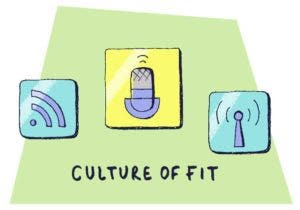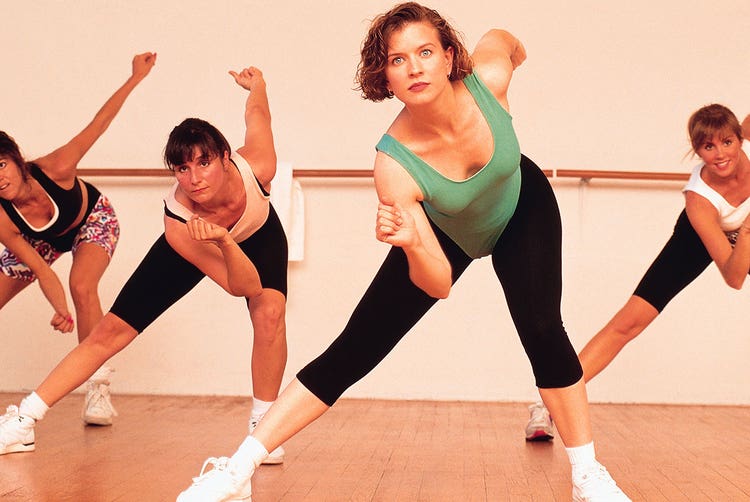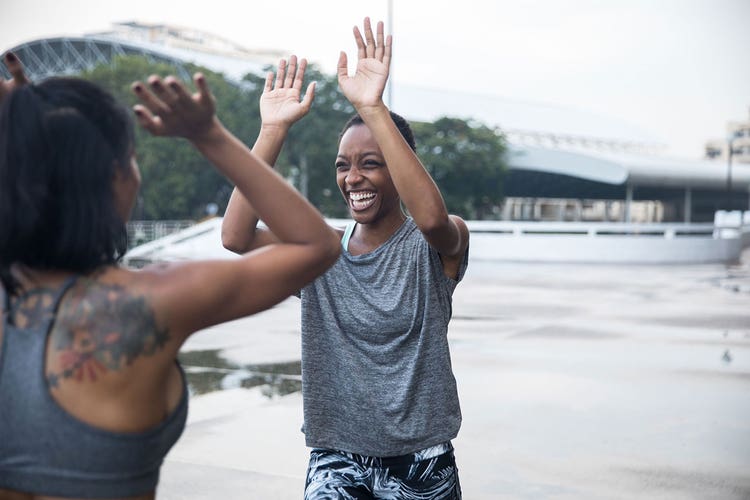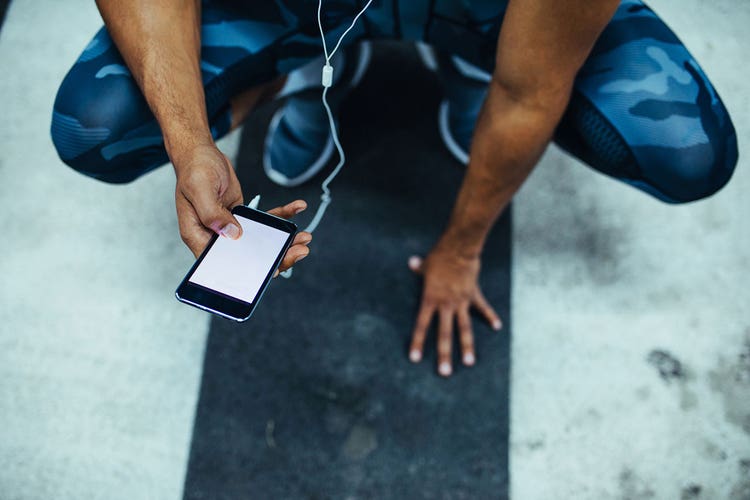Finding the Way From Cult of Fit to Culture of Fitness


Sometimes hitting the gym is all about escapism. An hour in a darkened Spin room or the pool can be the only hour of our day free of nonstop notifications reminding us of the world “out there” and the political intrigue, economic instability, persecuted peoples, disappearing natural resources, and celebrity antics that inspire those endless alerts.
Yet, the fitness practices that provide this solace are never inseparable from culture and politics, which have always shaped the way we work out. As the $28 billion fitness industry grows each year, exercise just as powerfully shapes the landscape of everyday life outside the gym: From workplace wellness to celebrity sweaty selfies to ubiquitous athleisure, fitness culture is becoming so expansive, you might call it inescapable.
From subculture to social imperative

These connections between working out and worldly concerns are hardly new. Back in the late 19th century, reformers who were anxious about the unhealthy effects of growing cities built YMCAs to inspire young men to exercise. Fast-forward to the 1950s and suburbanization inspired a generation to sweat in newly intense physical education classes: The “push-button luxuries” that accompanied postwar prosperity were making Americans lazy and fat, many worried, and dangerously unfit to fight the Soviet Union if the Cold War got hot.
By the 1970s, feminists rejected the idea that female meant frail, taking not only to athletic fields after the passage of landmark legislation Title IX but also founding and flocking to women-centered fitness like Lotte Berk and Jazzercise. Yoga, once considered weird and “woo-woo,” showed up on health-club schedules in the 1990s thanks to “natural living” and multiculturalism going mainstream. Closer to our own time, the anxieties caused by the tragedy of 9/11 boosted programs from military-style boot camps like CrossFit to “mind-body” formats intended to assuage these fears with mindfulness and “self-care.”
If politics and culture condition how we work out, it’s the media that has fueled the expansion of fitness from a strange subculture of dungeon-like weight rooms to the staple of daily life it is today. When bodybuilder and entrepreneur Jack LaLanne launched his exercise television show in 1951, he struggled to find funding or airtime; most dismissed him as “a charlatan or a nut.”
But before long, he had convinced a generation of viewers—mostly homemakers—who feared exercise was a waste of time that would “ruin their figure” of precisely the contrary: Making time for daily exercise was just as important as doing the dishes or their nails. At the height of the fitness boom in the 1970s and ’80s, only a small fraction of the population actually attended the sweaty spaces most prevalent in coastal cities and portrayed in movies like “Pumping Iron” and “Perfect,” but VHS brought millions around the world into the fitness fold right from home. These media helped transform fitness from a behind-the-scenes pursuit of the few to center stage in mass culture, where it often literally is today, from yoga in Times Square to the massive spin class at Oprah’s Super Soul Sunday to Australian Instagram star Kayla Itsines’ world tour.
Exercising identity and politics

In 2018, as the fitness industry booms, political and cultural tensions intensify, and media moves at a breakneck pace, this interconnectedness has never been more outright. Take “identity politics” that regularly ignite debate, and from which fitness is hardly insulated: Everybody Los Angeles challenges the gender binary with its gender-neutral locker rooms. “Fat Kid Dance Party,” which welcomes people of all sizes and abilities to exercise together, has helped import the “body positivity” movement from the activist internet to the gym floor.
As recently as 2006, when fitness clubs faced criticism for being inaccessible to people with physical disabilities, IHRSA, the industry’s leading professional organization, explained to the New York Times that most gyms assumed “people in wheelchairs or with visual impairments didn’t want to work out.” Yet this year, IHRSA Chairman Jim Worthington touted the universal inclusivity of people with physical disabilities in gyms as a key industry goal at the United Nations. Yoga might be most saturated in the progressive politics of the moment, with yoga as “a social justice practice” showing up everywhere from instructor trainings to Instagram stories.
Given the Republican president’s declared distaste for exercise, working out itself might these days be understood as an act of resistance. But in 2018, the cultural cast of the gym is not predictably progressive. Consider the recent controversy at an Indianapolis CrossFit affiliate: The management shut down a planned LGBTQ+ Pride event based on the rationale that Pride is sinful. The outcry was massive, but the management was hardly a lone voice. A chief CrossFit spokesman celebrated this stance against “LGBTQ ideology,” and plenty of CrossFitters were displeased with his subsequent dismissal.
Less explicitly political, the relatively new “bikini category” in bodybuilding—in which female contestants compete in a glittering two-piece and towering heels—and the panoply of products and programs dedicated to summer bodies and skinny jeans and getting swole, reinforce, rather than resist, dominant beauty standards.
Not that many fitness establishments aren’t doing their best to avoid getting political in a moment when doing so might court controversy. At a recent New York City instructor summit, SoulCycle master instructor Stacey Griffith advised fellow fit pros to “keep politics out of the studio” and to save their opinions for Instagram. On a larger scale, Lifetime Fitness recently banned cable news on the gym floor’s large TV sets. The “politically charged” commentary caused stress that is damaging to people’s health, the corporation said, though one Texas member called the decision itself anti-democratic and “un-American.”
Media—the path to fitness for all?

Relatively few Americans will exercise at a full-service gym or set foot in a swank boutique cycling or yoga studio; only 20 percent work out regularly. Yet many more will check out at the supermarket or see an ad online that reflects how traditional media are shifting people’s understanding and experience of exercise, as well. Specifically, fitness-focused publications are newly committing to inclusivity of all kinds, including Women’s Health banning the body-shaming term “bikini body” from its cover and Self magazine acknowledging with surprising candor that the wellness industry has a “race problem.” The mass-market ads in these publications are increasingly less likely to exclusively feature the slim, white, young fitness models who have dominated their pages and the industry.
If a revolution is afoot, we are in the early stages: As critics have pointed out, daring concepts like “radical self-acceptance” can quickly be hollowed out to sell the same old imperatives. (See “strong is the new skinny.”) Yet there’s no question that a redefinition of why people work out and who is welcome at the gym is underway, and not only in the boutique studios of New York and Los Angeles or even just the fitness media. 24 Hour Fitness CEO Chris Roussos is framing the benefits of exercise especially broadly, teaming up with the Behavior Change for Good Initiative led by Angela Duckworth, Ph.D., and Katherine Milkman, Ph.D. and an interdisciplinary team of scientists to ask the big question: “How can we make behavior change stick?”
Increasingly, fitness is no longer covered exclusively by niche publications or siloed in the “lifestyle” sections of general-interest outlets, but it attracts serious interest as a way to understand broader social issues. In The Atlantic, urban studies scholar Richard Florida used the gym to study gentrification, arguing that “Boutique Fitness Studios Are Remaking Urban Neighborhoods.” At the Harvard Business Review, SoulCycle CEO Melanie Whelan offered insights on luxury brand development.
Targeting a readership with vastly different politics, social critic Laurie Penny wrote in leftist magazine The Baffler that there’s no better evidence of how our individualistic culture intensifies inequality than the self-centered wellness craze. Still, she conceded, doing Downward Dog now and then might actually equip aspiring revolutionaries with the hope and health required to sustain their struggle.
It’s not just the news media, either. The strongest sign that fitness is becoming more deeply interwoven into our lives than ever before shows up in entertainment products that offer viewers nothing in the way of achieving flatter abs or thinner thighs. Ariana Grande took the stage at the MTV Video Music Awards to perform “Side to Side”—a song about having sex to the point of soreness—in a Spin class setup. For the winking reference to be understood—that a rough ride in an indoor cycling class can leave students as sore as a different kind of “ride”—the audience had to have some familiarity with that feeling (or at least have heard a friend complain about it).
Entire programs bank on a broad fascination with exercise culture as an exciting backdrop for shows aimed at audiences that need not work out themselves. The investigative podcast “Missing Richard Simmons” sought out the mysteriously absent flamboyant fitness star over six full-length episodes and audiences clamored for more. Now in its second season, “GLOW,” a fictionalized Netflix show about a 1980s all-women’s wrestling squad—“The Gorgeous Ladies of Wrestling”—was glowingly reviewed in a New York Times essay and praised as a “true original.” None of the recent reality shows that follow trainers’ daily lives have been huge hits, but the fact that they keep getting made points to how Americans are fascinated with fitness as a lifestyle as much as a way to achieve physical goals.
Ironically, for the increasingly immersive nature of exercise culture—not only from Netflix and the news, but also in Disney princesses outfitted in activewear, corporate fitness challenges, and so on—far too few Americans are able to enjoy it. Nonprofits are stepping up to bridge this gap between the inactive—and statistically unhealthier—masses and those who can afford often prohibitively expensive offerings. Looking ahead, there’s no question that the media will continue to weave together fitness, politics and culture as it has for at least the past 75 years. And the newest, digital forms of fitness that allow people to exercise inexpensively and conveniently might be our best hope to enable more people to fully participate in a fitness culture that today surrounds us but doesn’t (yet) allow us all to sweat on equal terms.
Video credit: Artbeats EXPRESS, Shutterstock
Photo credit: Comstock, Thinkstock; Jovo Jovanovic, Stocsky; bernardbodo, Thinkstock